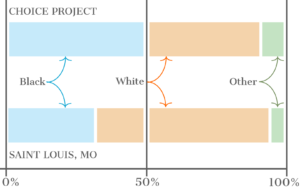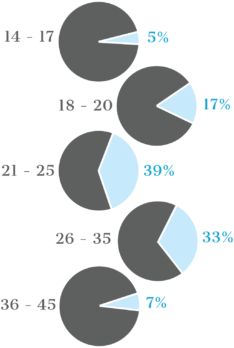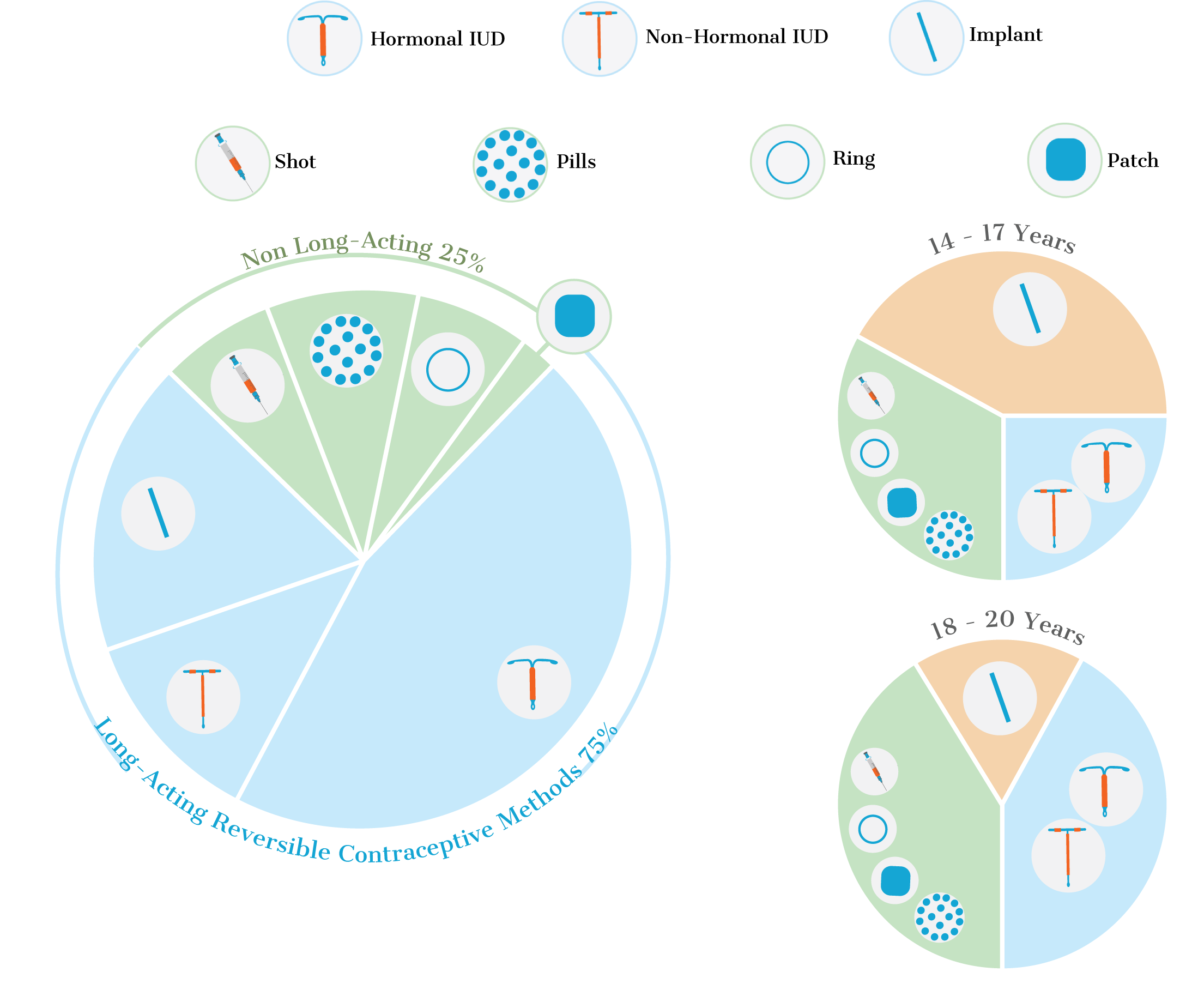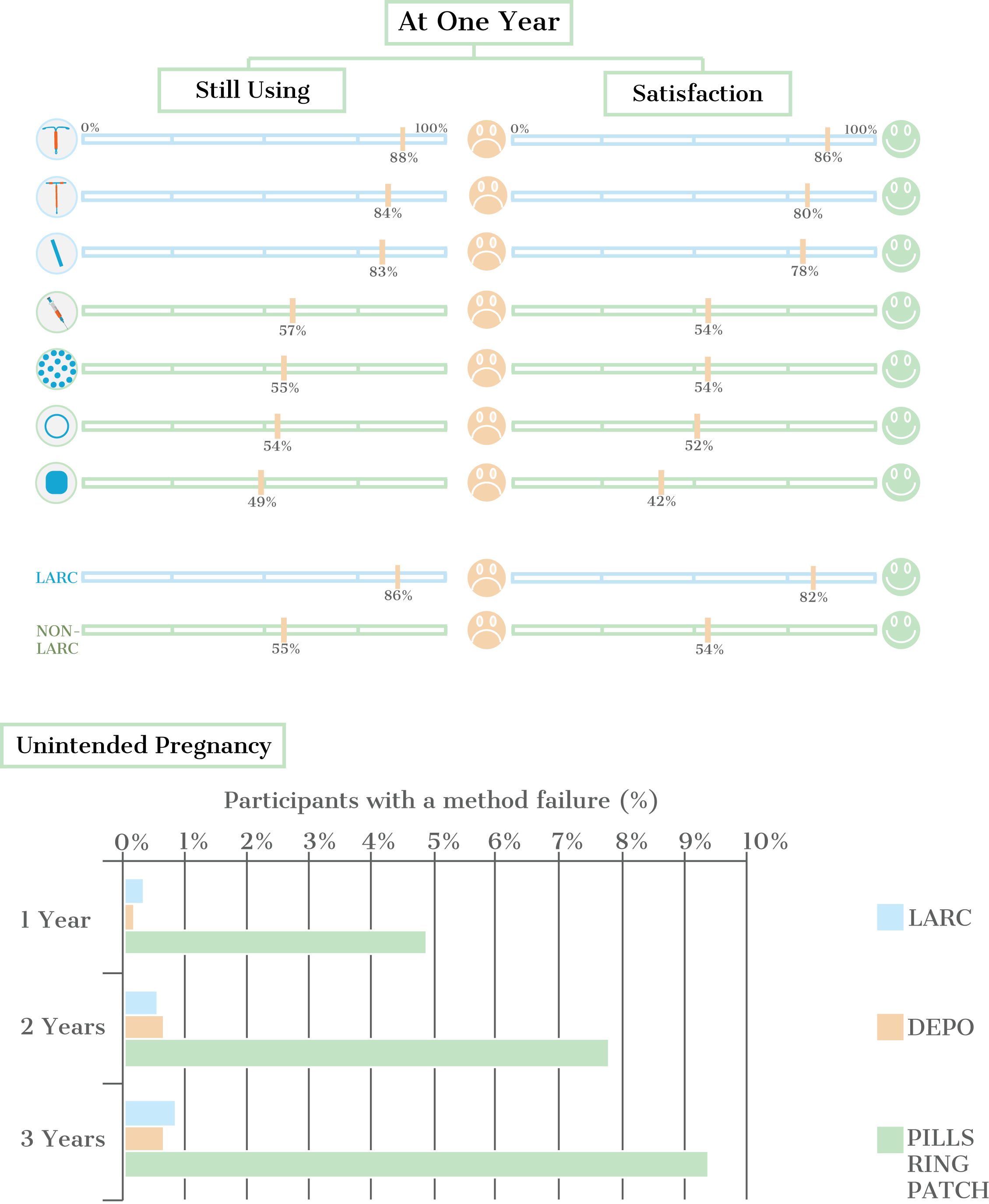We provide reproductive health care based on the Contraceptive CHOICE Project, a study of nearly 10,000 women in St. Louis that sought to promote highly effective forms of birth control and remove financial barriers to contraception.
Project Inception
The Contraceptive CHOICE Project began enrollment in August 2007. Over the course of 4 years, we enrolled 9,256 women. Our last participant enrolled in September 2011.
Participants represent a diverse group of women in terms of age, race and education. Each chart shows the percentage of women in each category among the 9,256 enrolled.



Method Choice
When our participants were counseled about all methods of birth control, 75% of the 9,256 women chose a Long-Acting Reversible Contraceptive method (LARC: IUD or Implant).
Young women under the age of 21 were also interested in the IUD and implant. Over 40% of young women, 14-17 years old, chose the implant, and over 40% of young women, 18-20 years old, chose an IUD.

What we learned
Among women who chose a LARC method, 86% were still using the method at 1 year. For women who chose a non-long-acting method, only 55% were still using their method at 1 year.
Women using LARC method shad the highest satisfaction at their one-year follow-up. Women who stopped their method during the course of the study were considered not satisfied.
Women using either LARC or the shot had the lowest unintended pregnancy rates during year 1, year 2, and year 3 of their follow-up. Pill, patch and ring users had much higher unintended pregnancy rates; they were 20 times more likely to have an unintended pregnancy compared to LARC users in Year 1.
